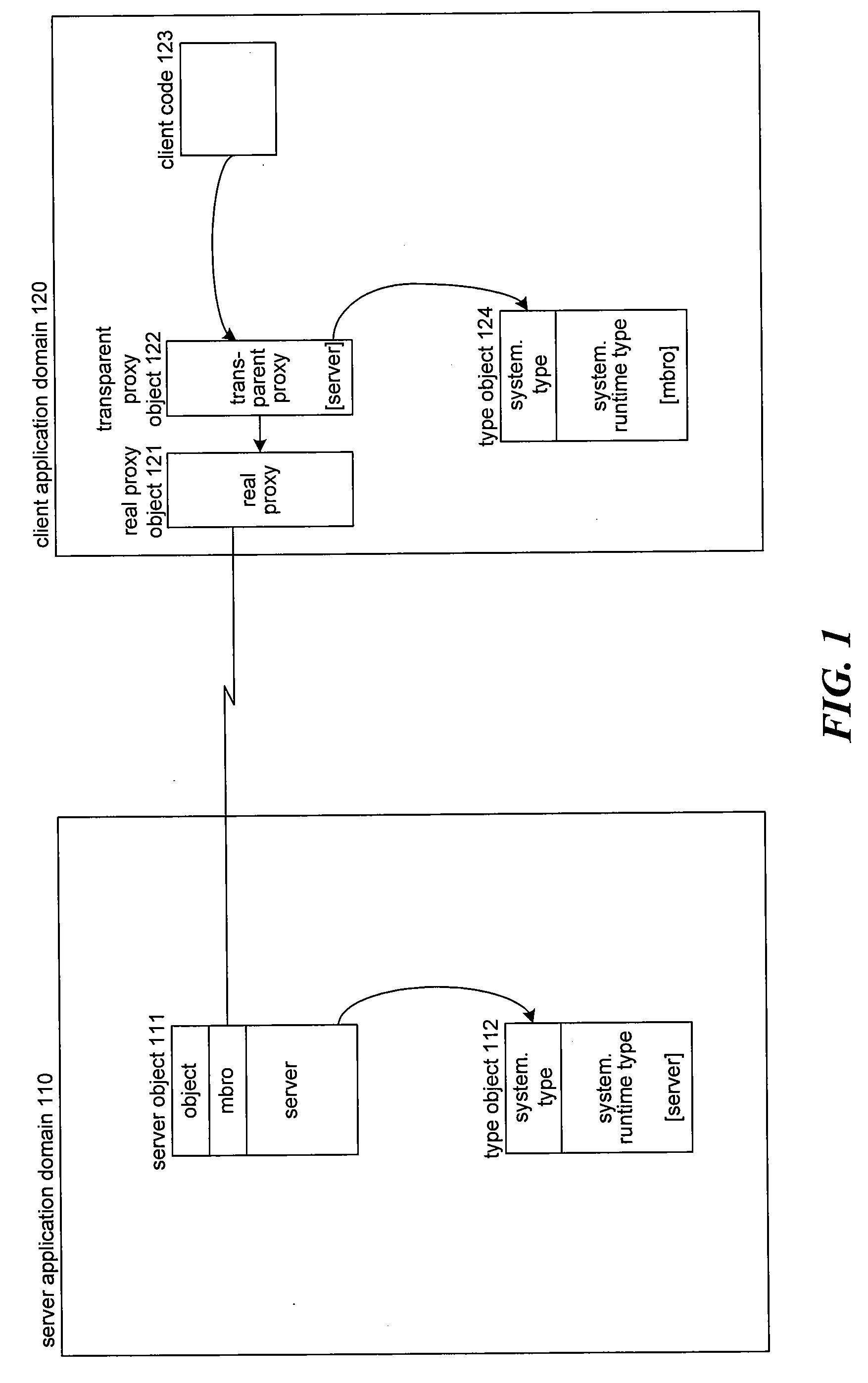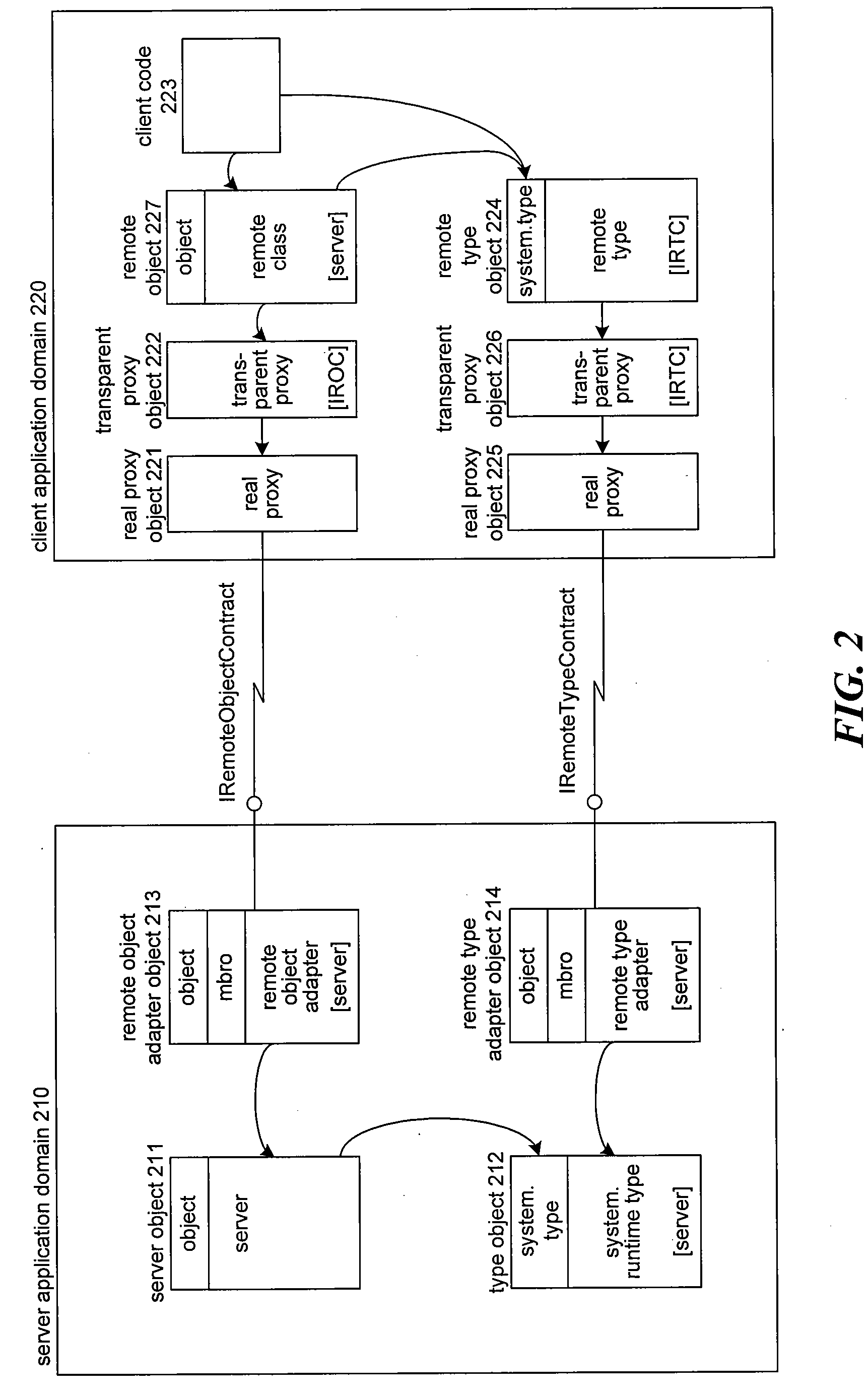Cross application domain late binding to non-local types
- Summary
- Abstract
- Description
- Claims
- Application Information
AI Technical Summary
Benefits of technology
Problems solved by technology
Method used
Image
Examples
Embodiment Construction
[0017]A method and system for late binding of objects across application domains is provided. In one embodiment, a system allows a non-virtual method of a base class inherited by a derived class to be effectively overridden so that code developed to access the method via the base class accesses the overriding behavior or functionality. The system replaces an instance of the derived class with a dynamic object and transparent object with the transparent object appearing to provide to invoking code an implementation of the derived class. For example, the dynamic object and the real object may be based on a real proxy and a transparent proxy of the NET Framework. Upon receiving an invocation of a method, the transparent proxy directs the invocation to the dynamic object by invoking an invoke method of the dynamic object passing an indication of the invoked method of the transparent object. The invoke method generally dispatches an invocation to the appropriate method. The dynamic objec...
PUM
 Login to View More
Login to View More Abstract
Description
Claims
Application Information
 Login to View More
Login to View More - R&D
- Intellectual Property
- Life Sciences
- Materials
- Tech Scout
- Unparalleled Data Quality
- Higher Quality Content
- 60% Fewer Hallucinations
Browse by: Latest US Patents, China's latest patents, Technical Efficacy Thesaurus, Application Domain, Technology Topic, Popular Technical Reports.
© 2025 PatSnap. All rights reserved.Legal|Privacy policy|Modern Slavery Act Transparency Statement|Sitemap|About US| Contact US: help@patsnap.com



